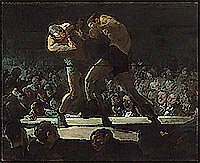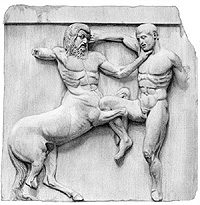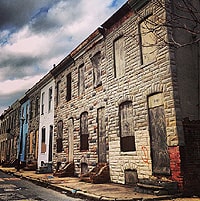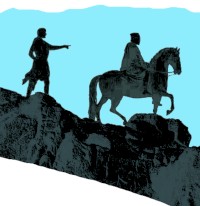The artifice of the Middle Ages is, in a sense, a cultural filter through which the ancient heroic vision has been translated to the modern mind. More than other modern authors, Robert E. Howard, reached beyond this veil of chivalry—without discarding it—for the ancient essence of the heroic protagonist. Howard judiciously skirted chivalric Europe and—when he wrote of the medieval period—wrote on the fringes, about crusaders and heathens warring on the margins of Christendom, where the tribal aspect of the hero emerged from the universal pal. When he wrote of chivalry he did so in a pre-Christian setting, preserving the ancient character of epic. His single overtly Christian hero, Solomon Kane, is an utter fanatic, distorting the traditional lusty hero into a compellingly severe dark saint, possessed of a hellish thirst for righting wrongs.
The video referenced below was my favorite episode in the series. The religious and secular use of symbology is well illustrated. The view of the Hereford map is an excellent example of the medieval worldview. The most amazing artifact is the illuminated English bible kept in Italy.
In the High Middle Ages the pagan regard for heroism had fallen only a peg from its pinnacle, as expressed in the ancient epics and the early medieval epics such as The Song of Roland and Beowulf. However, the cult of chivalry retained heroism in the service of Church and State, and is well represented in The Life of Arthur and the art of heraldry.
“Medieval life was controlled by two great forces: the Crown and the Church.”
So narrates Dimbleby, an excellent guide through the rising life of Britain. If this medieval dualism of power seems odd to us, consider, who are the two great powers that control our life?
What force has replaced the church as the power behind the throne?
Here is a clue, in the medieval period the tallest building was the church or the cathedral.
Later, in early modern times, as the United States formed in the so called Age of Enlightened Despotism, it was the palace of the prince, or in the case of the U.S., the Statehouse or Whitehouse, that rose above the buildings consecrated to lesser pursuits.
In our own time, who raises the tallest structures; the Church or the State?
Neither, of course.
Dimbleby is the right man for this presentation.
Faith in the Heroic Fantasy of Robert E. Howard
In the hands of Howard religious faith and questions of divinity had three relationships in terms of the hero, from most proximate to most distant:
1. The faith-based conviction of Solomon Kane is a palpable driving force that buoys the hero through trial and tribulations and drives him forward into deeper peril.
2. Cultic power, usually held by a diabolical villain, often a high priest or shaman, and in Kane's adventures by a helpful juju man, most often served to challenge the hero, but may also aid him.
3. Awesome, superhuman power, reminiscent of the ancient Hellenic and Aztec sense of divinity, plagues man as an ancient legacy from an age when powers without empathy for mortal kind walked the earth, the hero's task being to drive such—often beautiful—horrors back into the "mad immensities of space" from which they sprang.
Howard's use of faith combines Christian, pagan and shamanic elements seen through a modern—somewhat deistic—lens and has the effect of maximizing heroic opportunities.











